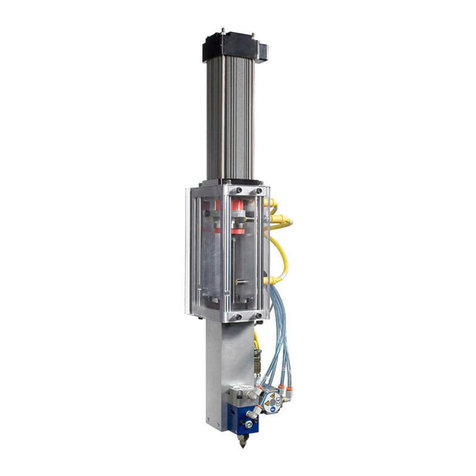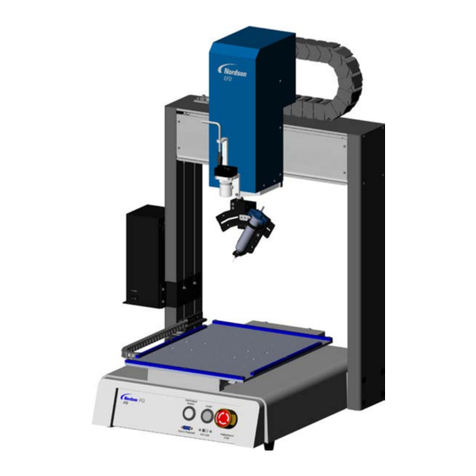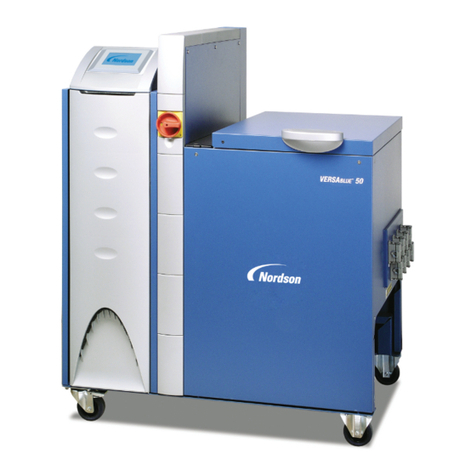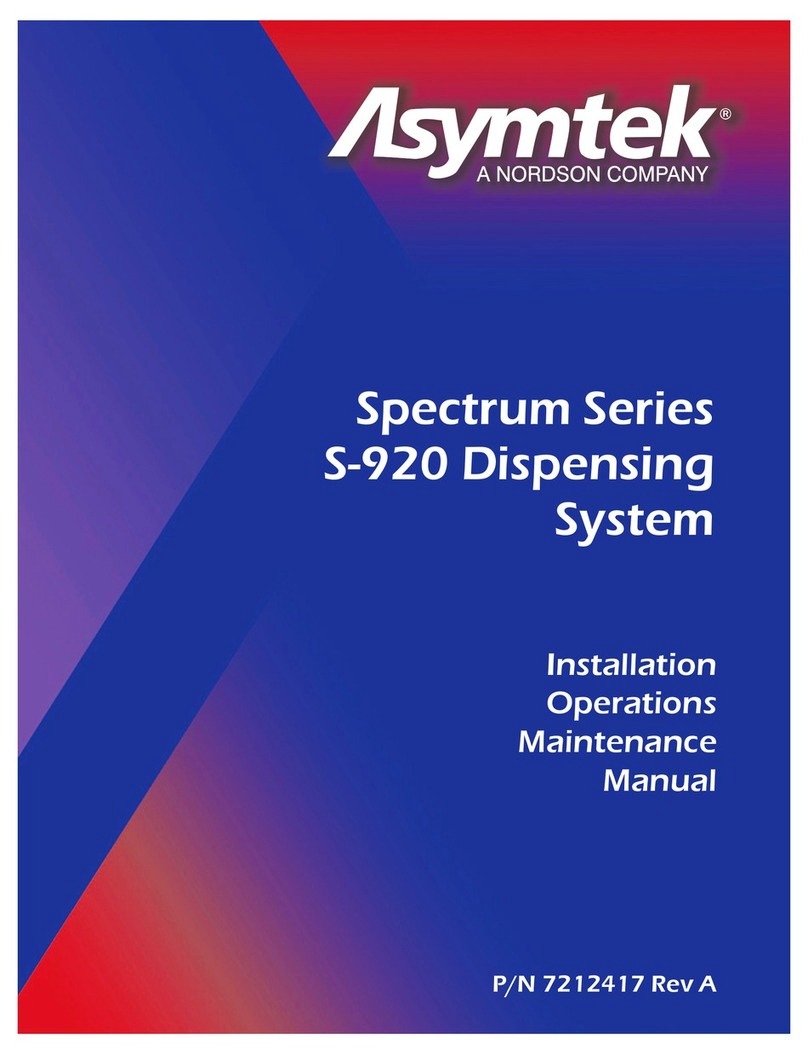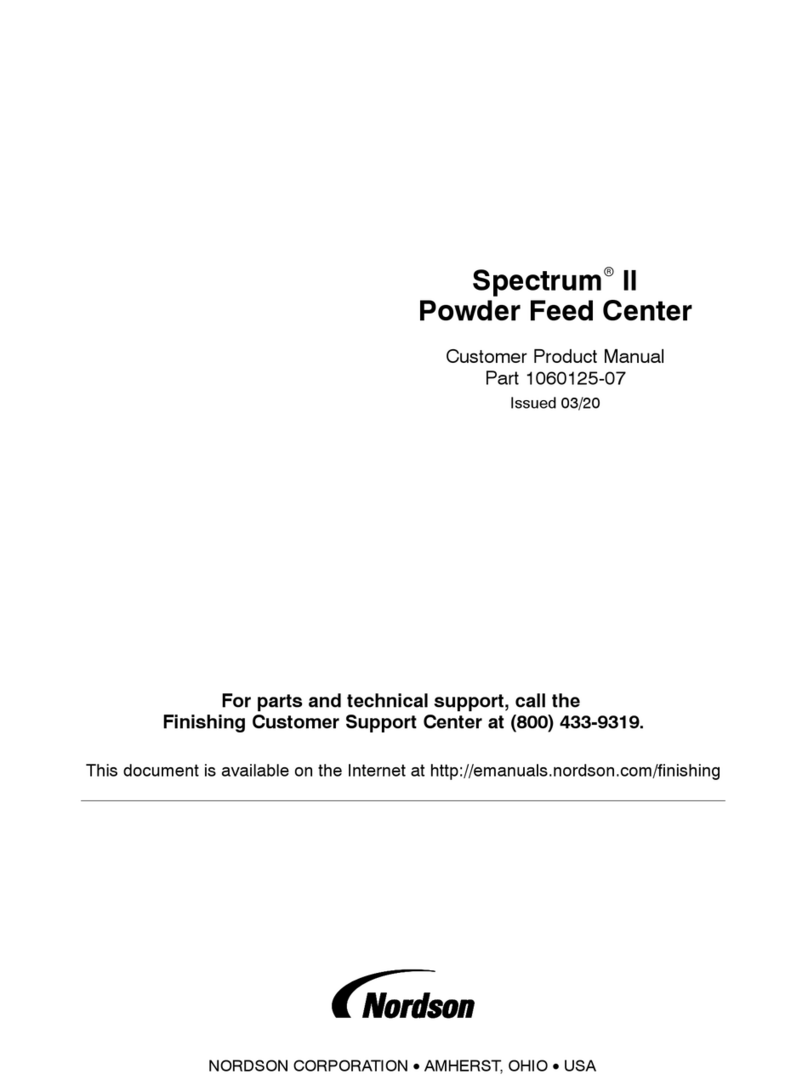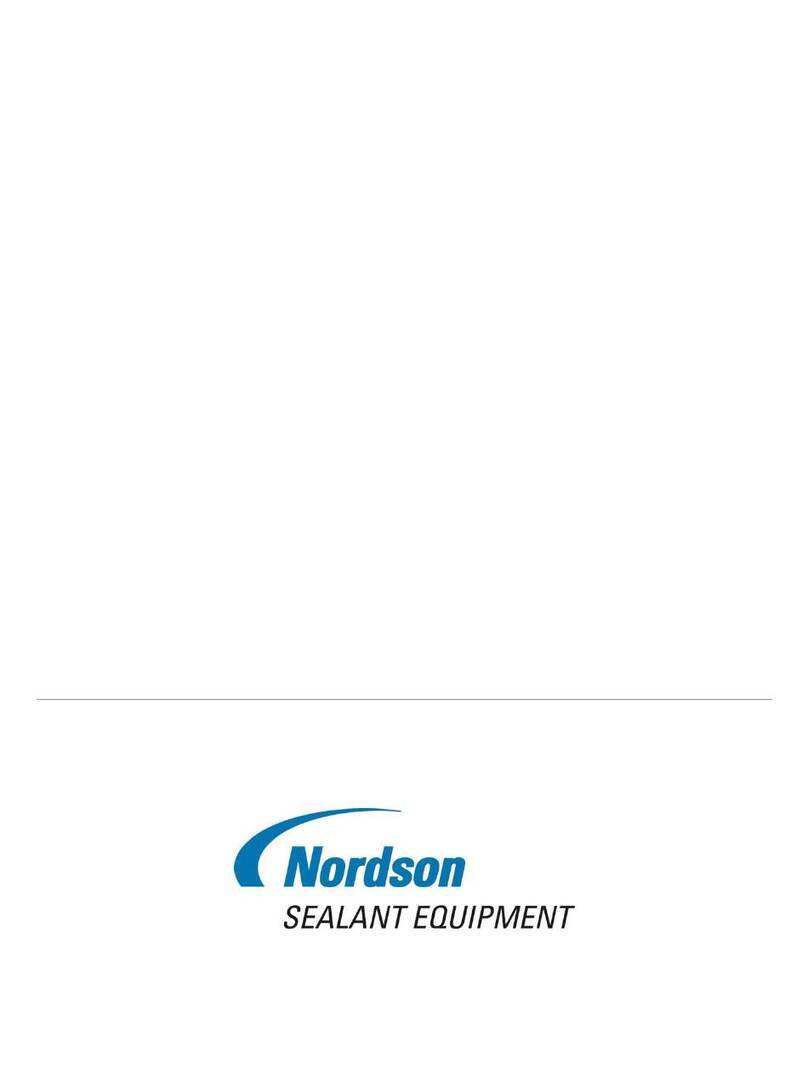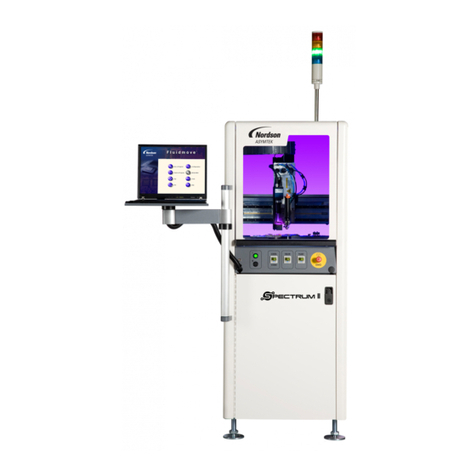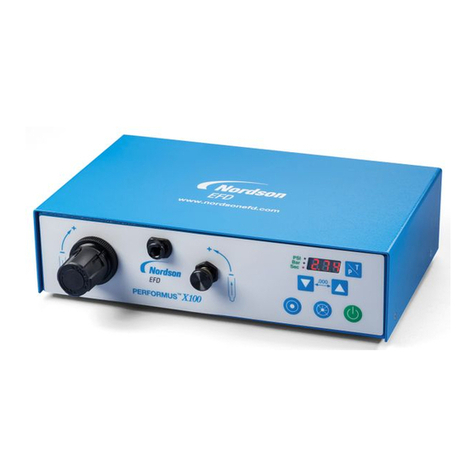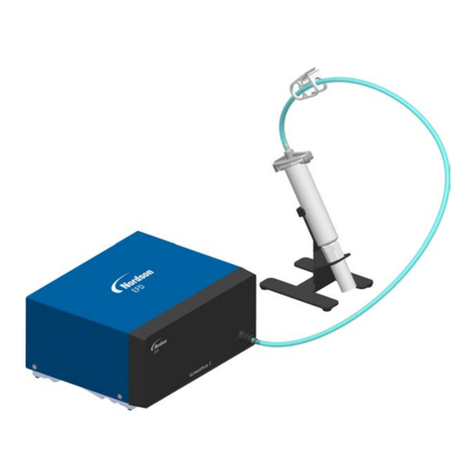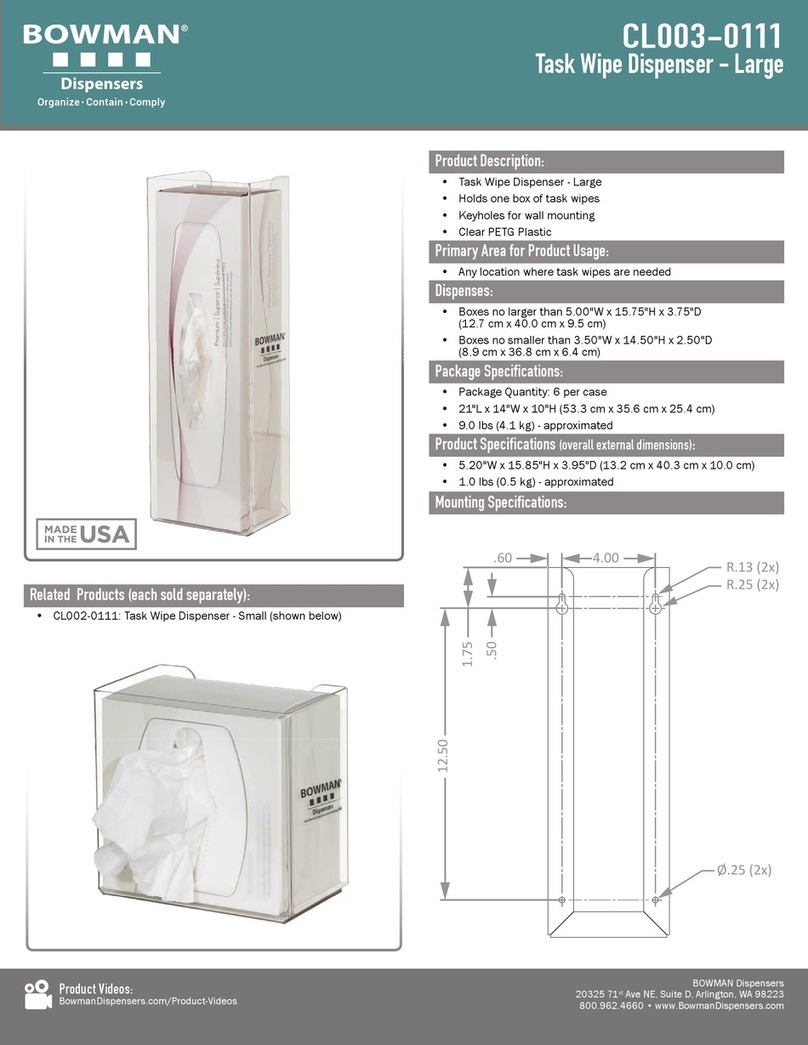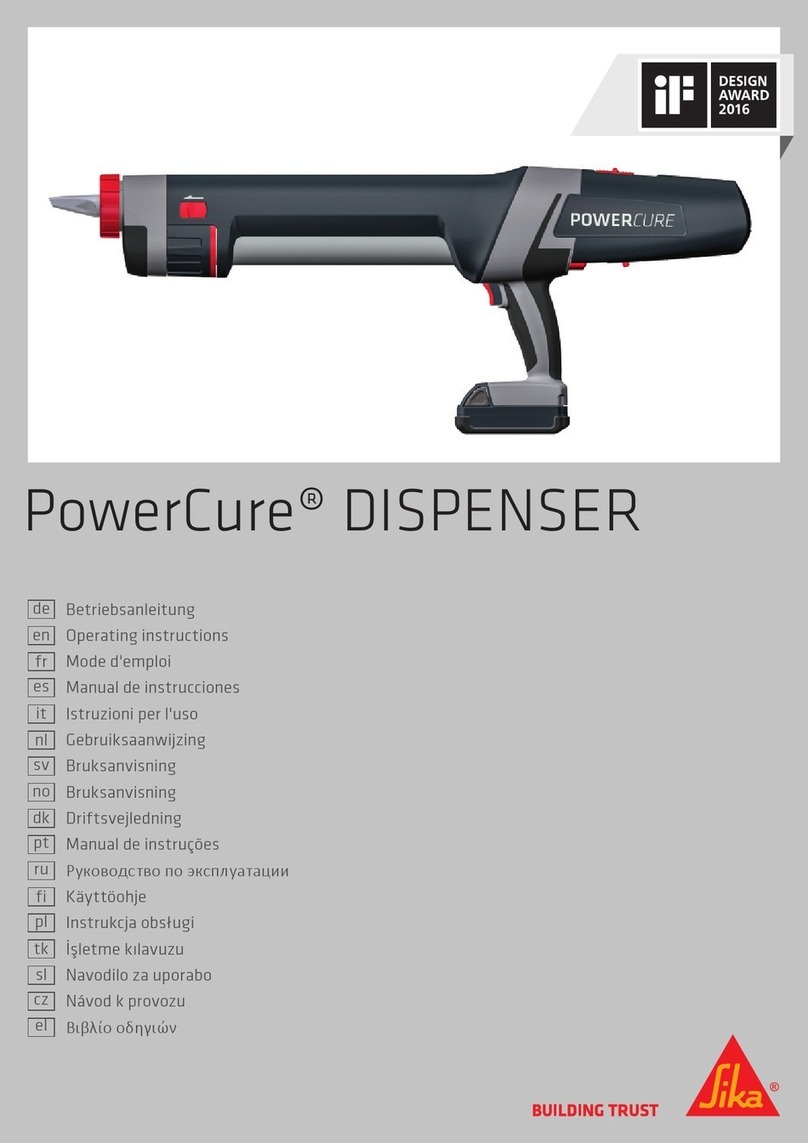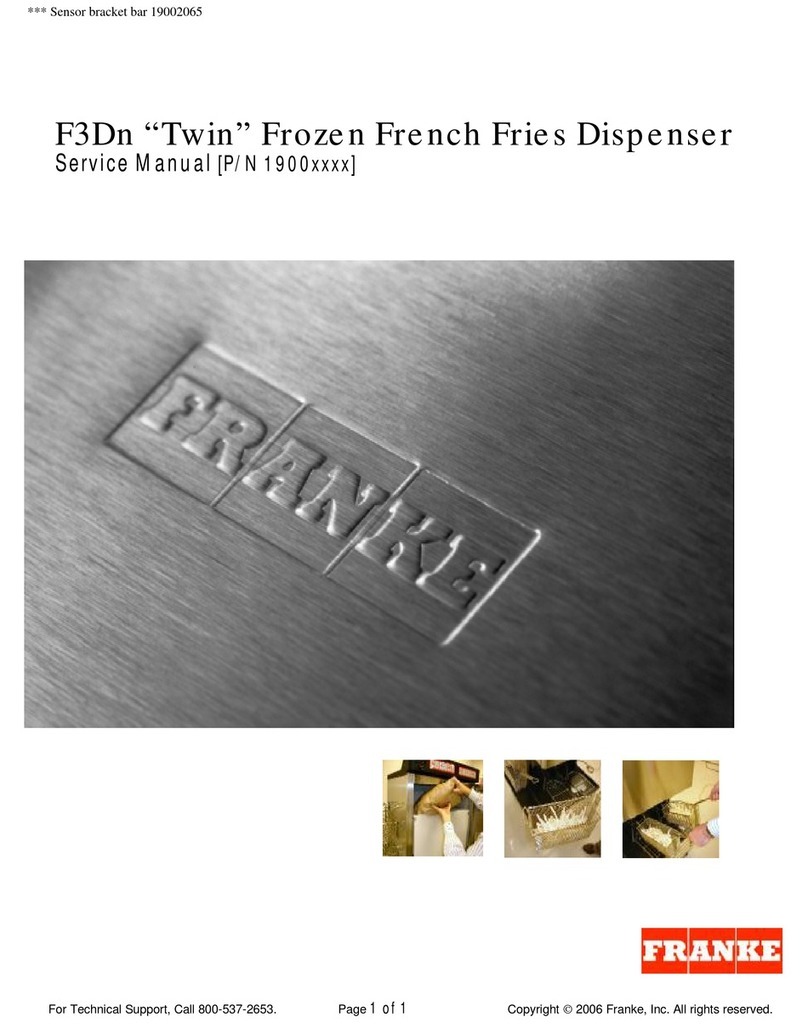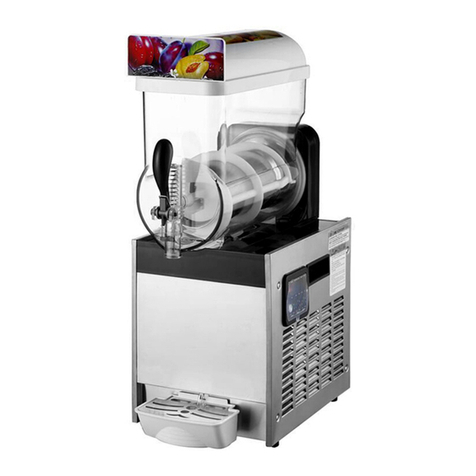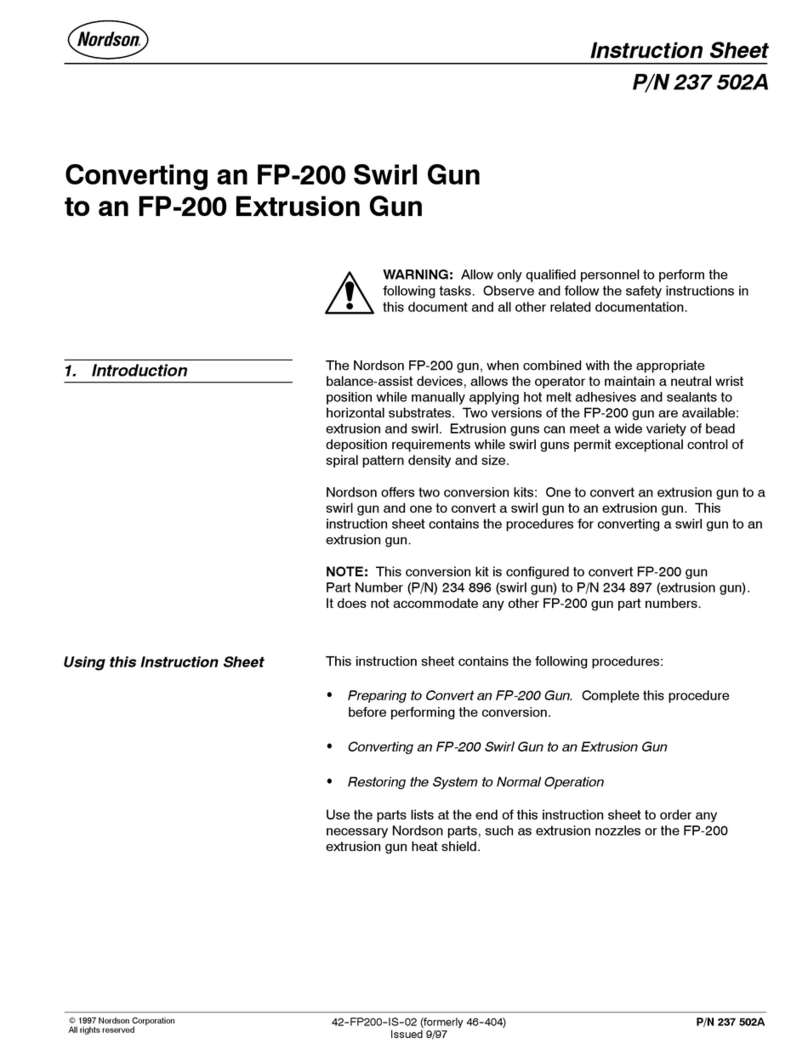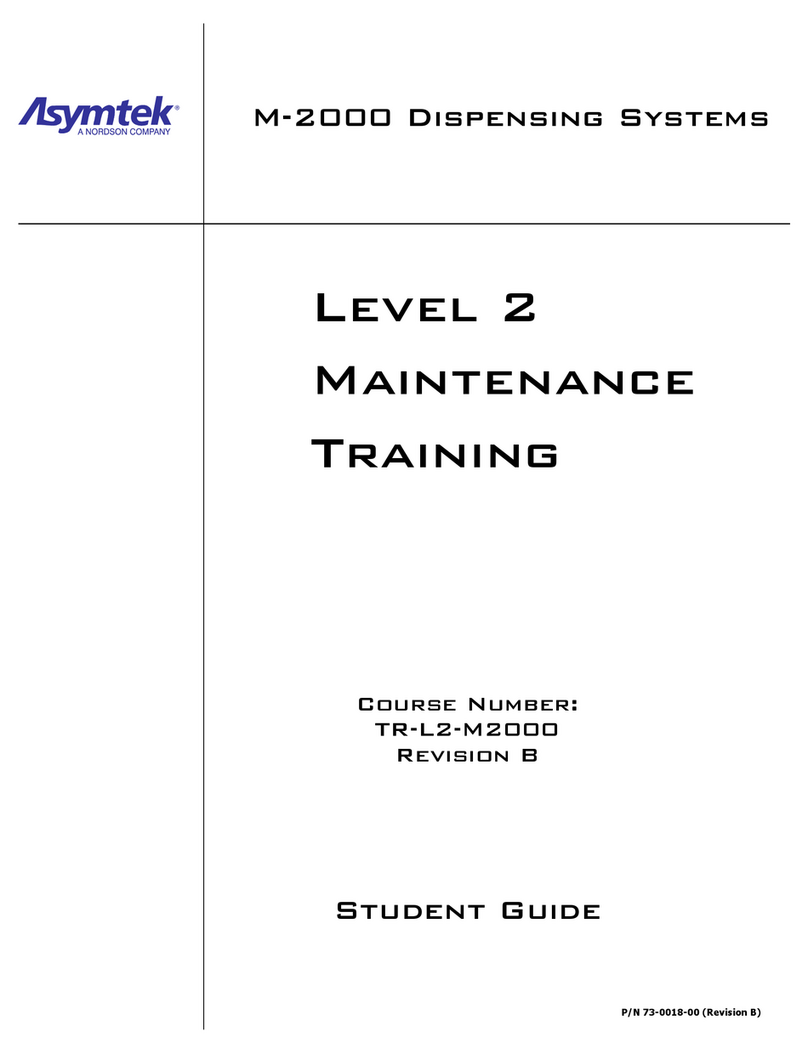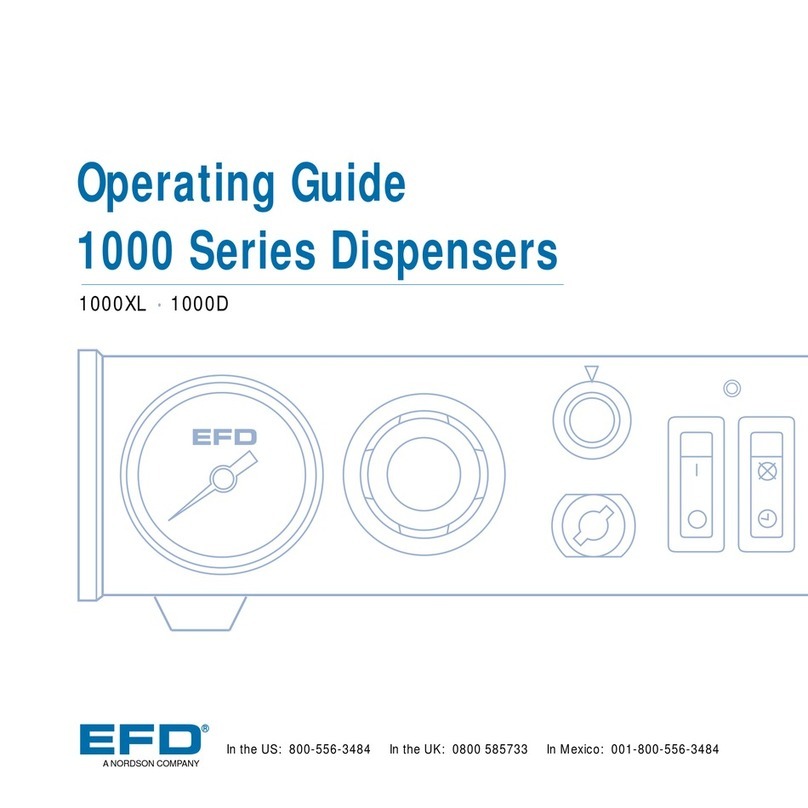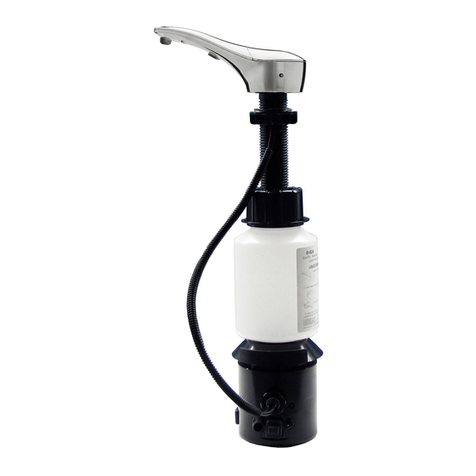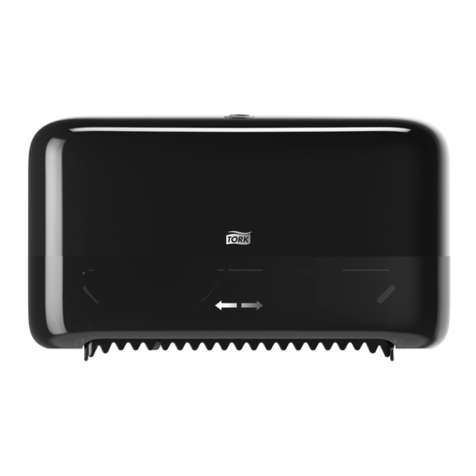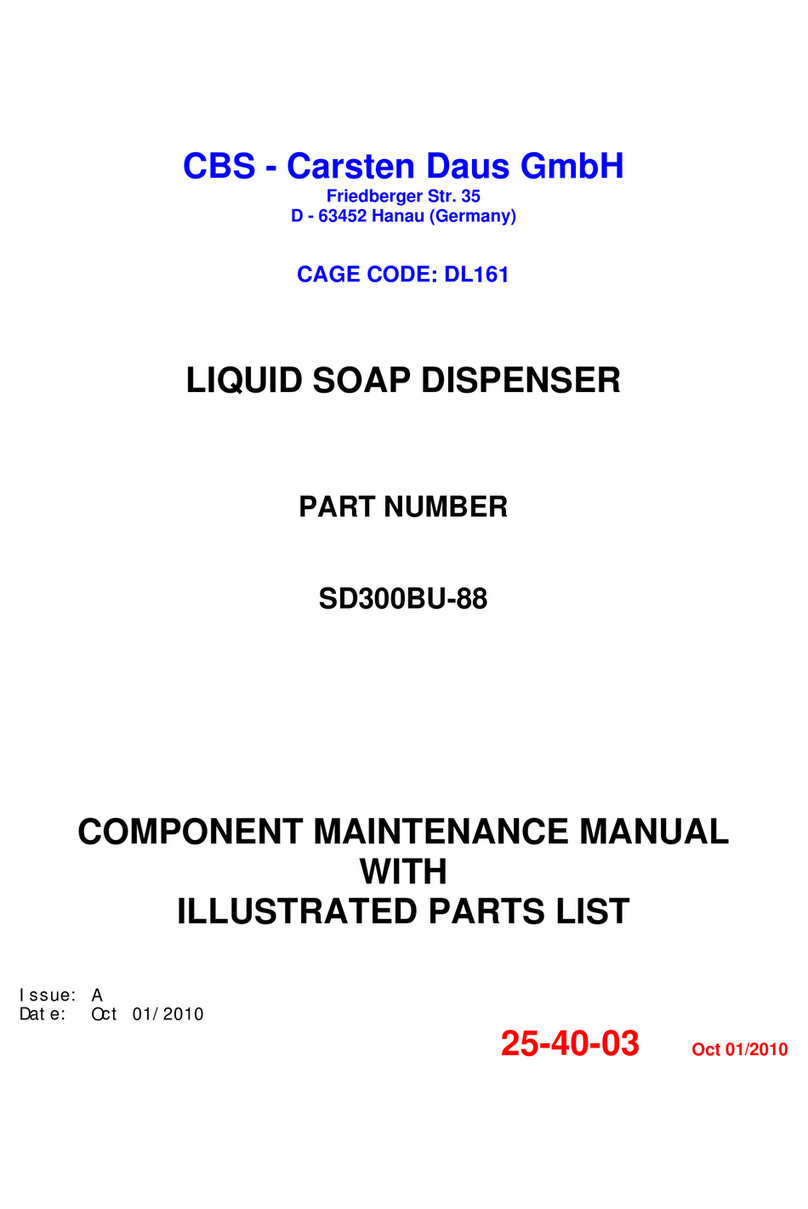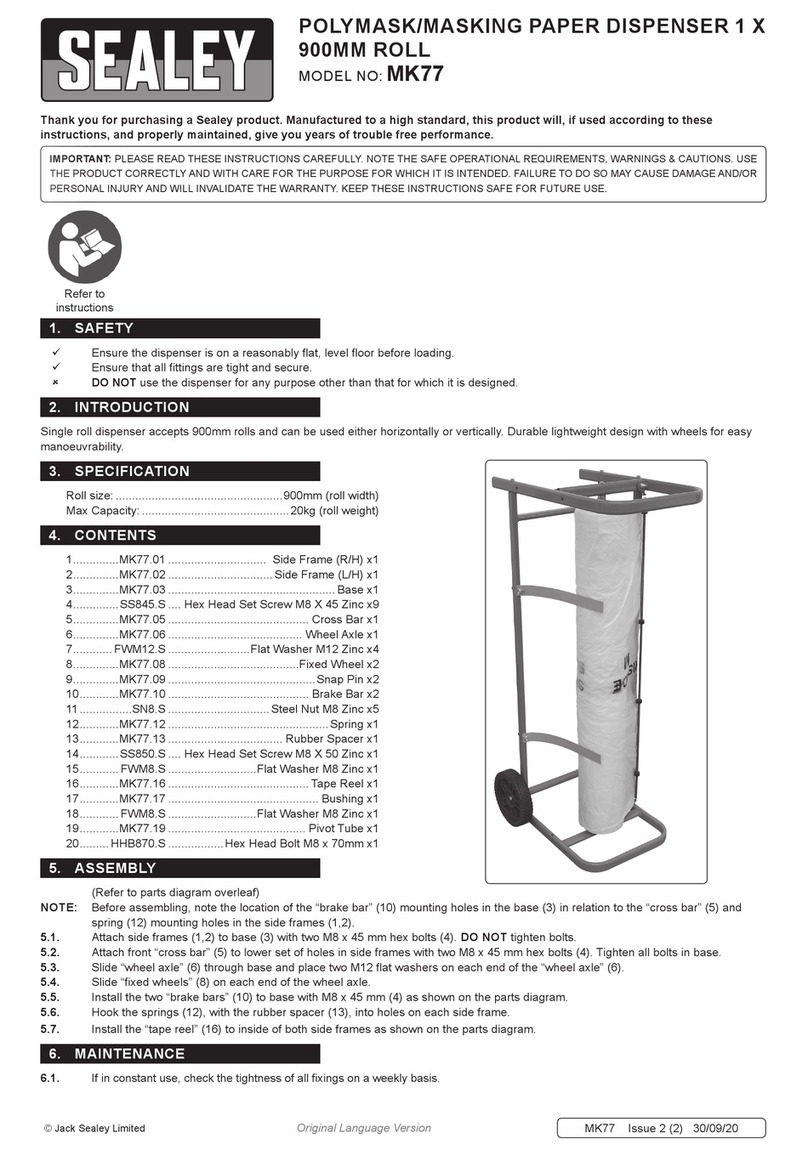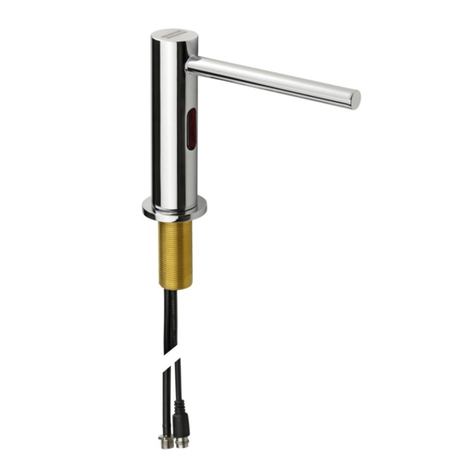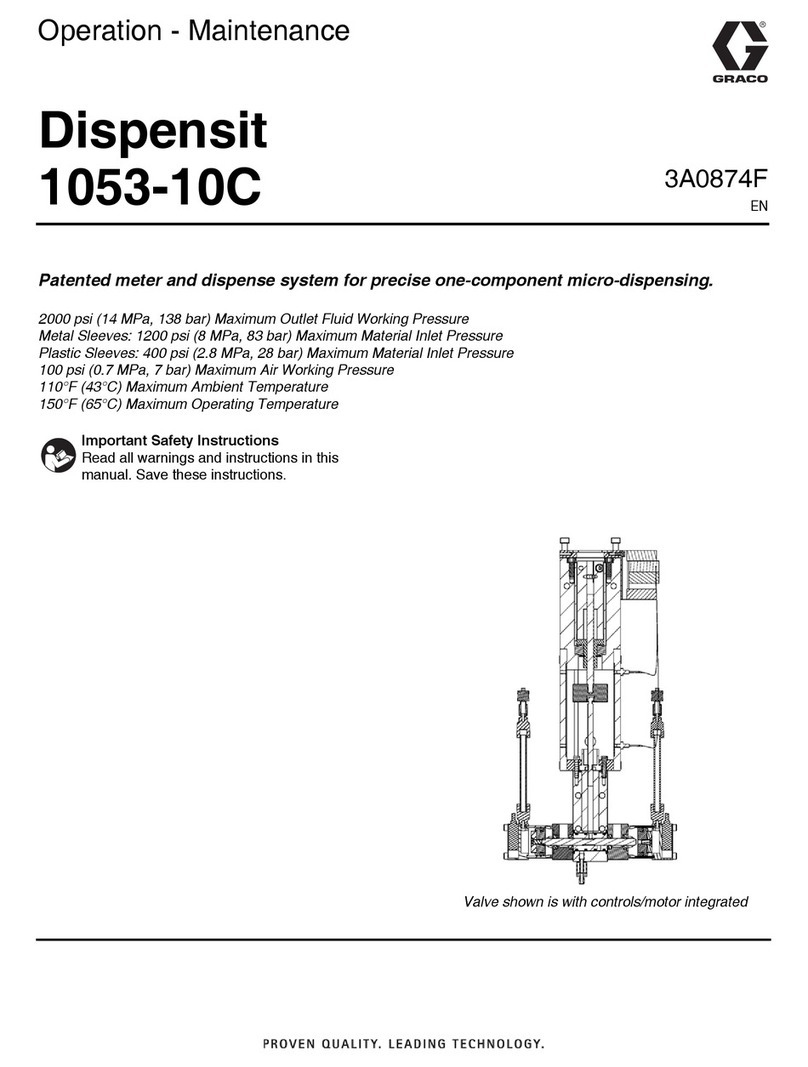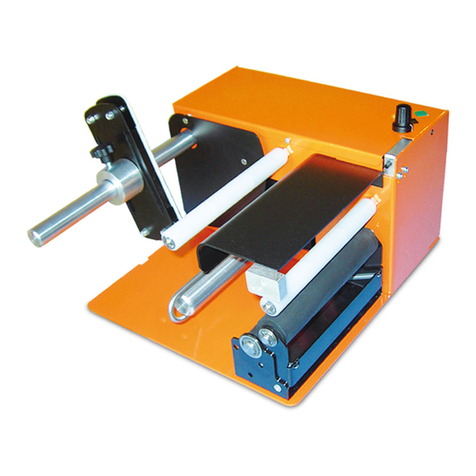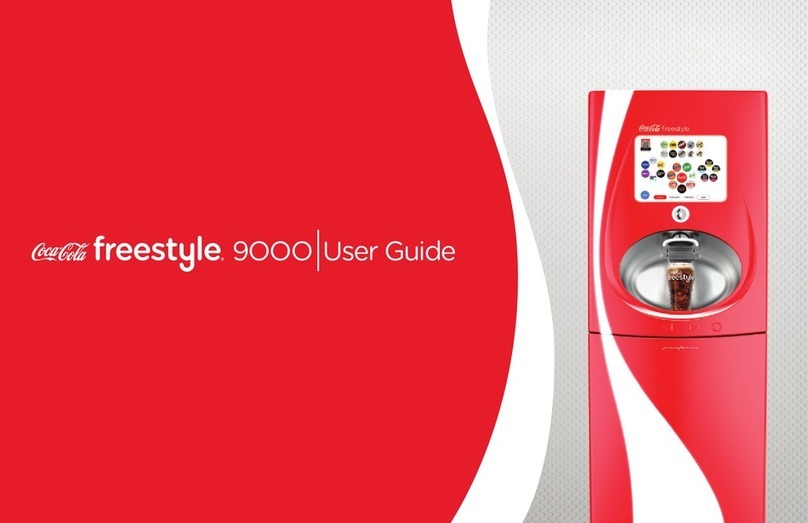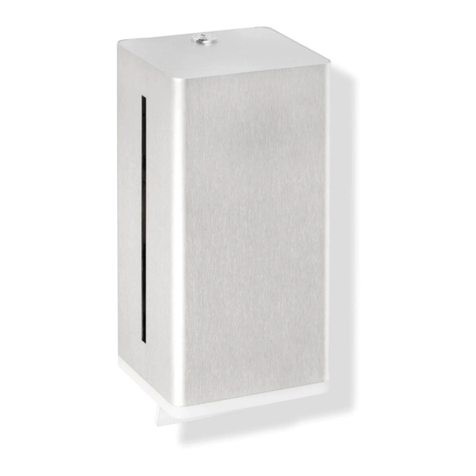
Pro-Meter S-Series Dispensers
2
Part 1075653--06 E2011 Nordson Corporation
High-Pressure Fluids
High-pressure fluids, unless they are safely contained, are
extremely hazardous. Always relieve fluid pressure before
adjusting or servicing high pressure equipment. A jet of
high-pressure fluid can cut like a knife and cause serious bodily
injury, amputation, or death. Fluids penetrating the skin can also
cause toxic poisoning.
If you suffer a fluid injection injury, seek medical care
immediately. If possible, provide a copy of the MSDS for the
injected fluid to the health care provider.
The National Spray Equipment Manufacturers Association has
created a wallet card that you should carry when you are
operating high-pressure spray equipment. These cards are
supplied with your equipment. The following is the text of this
card:
WARNING: Any injury caused by high pressure
liquid can be serious. If you are injured or even
suspect an injury:
SGo to an emergency room immediately.
STell the doctor that you suspect an injection injury.
SShow him this card
STell him what kind of material you were spraying
MEDICAL ALERT—AIRLESS SPRAY WOUNDS: NOTE TO
PHYSICIAN
Injection in the skin is a serious traumatic injury. It is important
to treat the injury surgically as soon as possible. Do not delay
treatment to research toxicity. Toxicity is a concern with some
exotic coatings injected directly into the bloodstream.
Consultation with a plastic surgeon or a reconstructive hand
surgeon may be advisable.
The seriousness of the wound depends on where the injury is on
the body, whether the substance hit something on its way in and
deflected causing more damage, and many other variables
including skin microflora residing in the paint or gun which are
blasted into the wound. If the injected paint contains acrylic
latex and titanium dioxide that damage the tissue’s resistance to
infection, bacterial growth will flourish. The treatment that
doctors recommend for an injection injury to the hand includes
immediate decompression of the closed vascular compartments
of the hand to release the underlying tissue distended by the
injected paint, judicious wound debridement, and immediate
antibiotic treatment.
Fire Safety
To avoid a fire or explosion, follow these instructions.
SGround all conductive equipment. Use only grounded air
and fluid hoses. Check equipment and workpiece
grounding devices regularly. Resistance to ground must not
exceed one megohm.
SShut down all equipment immediately if you notice static
sparking or arcing. Do not restart the equipment until the
cause has been identified and corrected.
SDo not smoke, weld, grind, or use open flames
where flammable materials are being used or stored.
SDo not heat materials to temperatures above those
recommended by the manufacturer. Make sure heat
monitoring and limiting devices are working properly.
SProvide adequate ventilation to prevent dangerous
concentrations of volatile particles or vapors. Refer to local
codes or your material MSDS for guidance.
SDo not disconnect live electrical circuits when working with
flammable materials. Shut off power at a disconnect switch
first to prevent sparking.
SKnow where emergency stop buttons, shutoff valves, and
fire extinguishers are located. If a fire starts in a spray
booth, immediately shut off the spray system and
exhaust fans.
SShut off electrostatic power and ground the charging system
before adjusting, cleaning, or repairing electrostatic
equipment.
SClean, maintain, test, and repair equipment according to the
instructions in your equipment documentation.
SUse only replacement parts that are designed for use with
original equipment. Contact your Nordson representative
for parts information and advice.
Halogenated Hydrocarbon
Solvent Hazards
Do not use halogenated hydrocarbon solvents in a pressurized
system that contains aluminum components. Under pressure,
these solvents can react with aluminum and explode, causing
injury, death, or property damage. Halogenated hydrocarbon
solvents contain one or more of the following elements:
Element Symbol Prefix
Fluorine F “Fluoro-”
Chlorine Cl “Chloro-”
Bromine Br “Bromo-”
Iodine I “Iodo-”
Check your material MSDS or contact your material supplier for
more information. If you must use halogenated hydrocarbon
solvents, contact your Nordson representative for information
about compatible Nordson components.
Action in the Event of a
Malfunction
If a system or any equipment in a system malfunctions, shut off
the system immediately and perform the following steps:
SDisconnect and lock out system electrical power.
Close hydraulic and pneumatic shutoff valves and
relieve pressures.
SIdentify the reason for the malfunction and correct it before
restarting the system.
Disposal
Dispose of equipment and materials used in operation and
servicing according to local codes.

